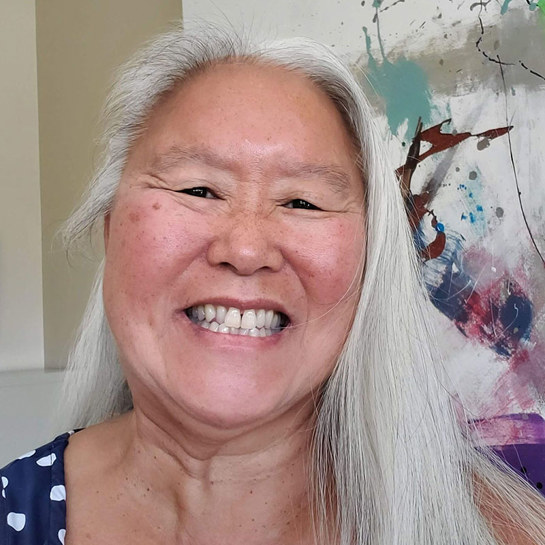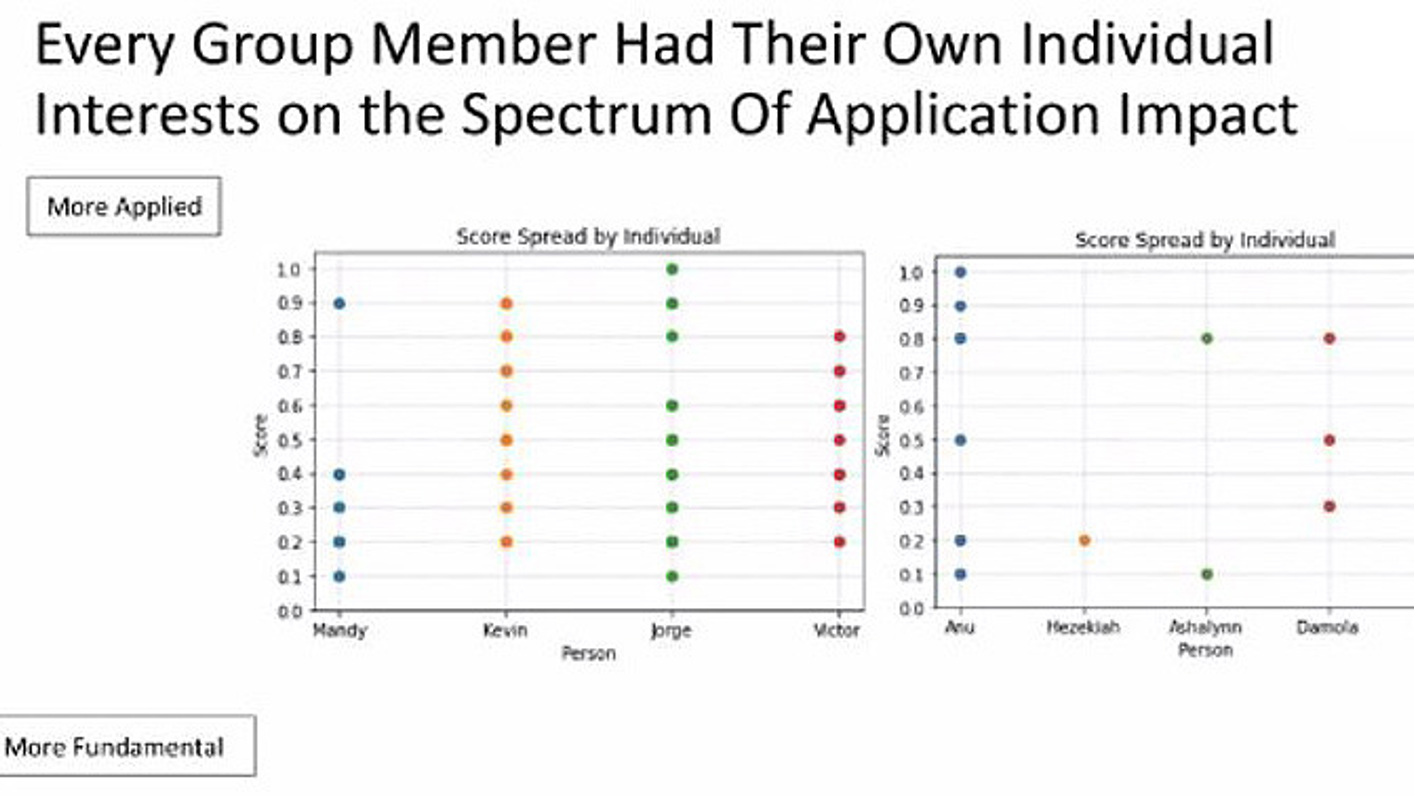Growing, Inspiring, and Diversifying Computational Science and Engineering through Broader Engagement
The COVID-19 pandemic forced most of the world to reinvent collaboration amid dire circumstances, and SIAM staff and the organizers of the 2021 SIAM Conference on Computational Science and Engineering (CSE21)—which took place in March—certainly rose to the occasion. SIAM reimagined the conference in a virtual format by implementing new and engaging online platforms that allowed members of the CSE community to connect and discuss innovative research from their own individual workspaces. CSE is critical to the advancement of pressing scientific issues that require inter- and multidisciplinary work. When individuals who seek to solve the world’s greatest problems—regardless of their professional or academic journeys—work together, the possibilities for scientific discovery are limitless. The Sustainable Horizons Institute’s (SHI) Broader Engagement (BE) program endeavors to widen these possibilities.
In 2015, Mary Ann Leung—president and founder of SHI—initiated BE@CSE to encourage student participation while she was serving on the CSE15 Organizing Committee. Since then, SHI has continued the program at each subsequent CSE meeting. BE offers financial support to members of underrepresented and underprivileged groups, affording them full access to the rich technical material at CSE conferences. It also fosters a sense of community and belonging through mentorship, networking, and other activities that connect participants with each other. In addition, the program promotes inclusion by providing opportunities for scientists to volunteer, recruit, and learn.
Over the last six years, BE participation has increased from just a handful of students in 2015 to more than 100 in 2021. In 2017, BE began organizing Guided Affinity Groups to strengthen participants’ connections with SIAM, enhance their conference experience, and provide psychosocial support. Volunteers with expertise in one or more of the conference’s technical themes lead daily group meetings to suggest sessions of interest, answer questions, and discuss recent talks. At the end of the week, each group presents their findings. BE@CSE continues to evolve and improve with each meeting.
BE@CSE21 was very successful despite the challenges of a virtual conference format. Throughout the conference, 47 BE participants presented posters and four individuals spoke about their research during a BE minisymposium (see Figure 1). Participants made long-lasting connections with seasoned scientists via the mentor-protégé mixer and BE networking session (see Figure 2), both of which took place in an online platform that was customized by BE committee member Aimee Maurais (Massachusetts Institute of Technology).
The popularity of Guided Affinity Groups—which allowed students to join one of 10 groups that spanned a wide range of topics from quantum computing to machine learning—soared at CSE21. Group members especially enjoyed chatting about their conference experiences and offering advice to each other. Christine Vaughan (Iowa State University) discussed her involvement in the “Meshes and Particles and GPUs Oh My!” group, which was led by Ann Almgren (Lawrence Berkeley National Laboratory). “I particularly enjoyed being part of a small Guided Affinity Group where I was able to check in daily with other participants and learn about how they navigated the conference,” Vaughan said. “As a young researcher, I find these interactions with my peers to be so helpful.”
Although technical topics were the primary focus of most conversations, leaders also extended their advice and professional networks to their groups. “My group had a wonderful leader who helped connect us with her network, gave us amazing advice and suggestions, and instilled so much confidence in us,” Vaughan continued. “She was incredible and has already made lasting impacts in our scientific lives.”
All Guided Affinity Groups presented their takeaways during the BE wrap-up session (see Figure 3). This year’s presentations included creative displays and heartfelt messages about the program’s positive impacts. Andy Salinger’s (Sandia National Laboratories) “Impacting Science and Engineering Applications with Computational Science” group used a scale from 0 (fundamental) to 1 (applied) to rate the talks they attended (see Figure 4). Participants analyzed their own interests on the spectrum to better understand the type of research they might want to pursue. The “Inverse Problems and Applications” group, which was led by Malena Español (Arizona State University), explored the virtues of being part of a diverse group comprised mostly of women, ethnic minorities, and a community college student. Participants reviewed advice from guest speakers about applying for fellowships and degree programs.
BE also collaborated with conference organizers to provide a meeting-wide panel series on challenges and best practices for equity, diversity, and inclusion (EDI) in CSE. The first part of the panel featured scientists at varying career stages who discussed their perseverance through the difficulties of finding one’s place in CSE as a member of an underrepresented group. After reflecting on his journey and successes, panelist Derek Jones (Lawrence Livermore National Laboratory) drew some conclusions. “As a minority, I felt proud because I got to do really interesting work even though I wasn’t well represented,” he said. “Hopefully in the future we can help change that.”
The second portion of the panel showcased organizational leaders who are actively working on EDI initiatives. They shared successes and challenges in their efforts to catalyze change within institutions that have long operated the same way. During the third and final session, panelists engaged in constructive conversation about EDI and brainstormed strategies for moving forward.
For many BE participants, CSE21 was the first conference that they ever attended. The goal of BE was thus to provide a positive and inclusive experience so that CSE21 would not be their last. The program continues to inspire and alter trajectories to ensure that SIAM’s CSE community is both diverse and inclusive. Miandra Ellis (Arizona State University) reflected on the connections she made during the conference, which boosted her confidence and provided a new perspective on self-worth. “I interacted with professionals in my field and learned about both their research and their journey to becoming the researchers they are today,” she said. “This shattered my preconceptions about successful mathematicians being people without doubt who knew that they belonged from the first time they saw an equation. This evolution in the way that I viewed successful mathematicians was further supported by my mentoring experience. The discussions I had with my mentor about how to approach the post-graduate career period helped to dispel notions that I had about my worth being tied to my ability to graduate with a job offer in hand.”
The BE program thanks everyone who participated in this year’s activities at CSE21 and looks forward to continued engagement with the SIAM community at future conferences.
About the Authors
Mary Ann Leung
Founder and president, Sustainable Horizons Institute
Mary Ann Leung is founder and president of the Sustainable Horizons Institute. She is dedicated to workforce development and increasing opportunities for underprivileged students in science, technology, engineering, and mathematics.

Jasmine Pineda
Program Assistant, Sustainable Horizons Institute
Jasmine Pineda is a program assistant at the Sustainable Horizons Institute.
Stay Up-to-Date with Email Alerts
Sign up for our monthly newsletter and emails about other topics of your choosing.







